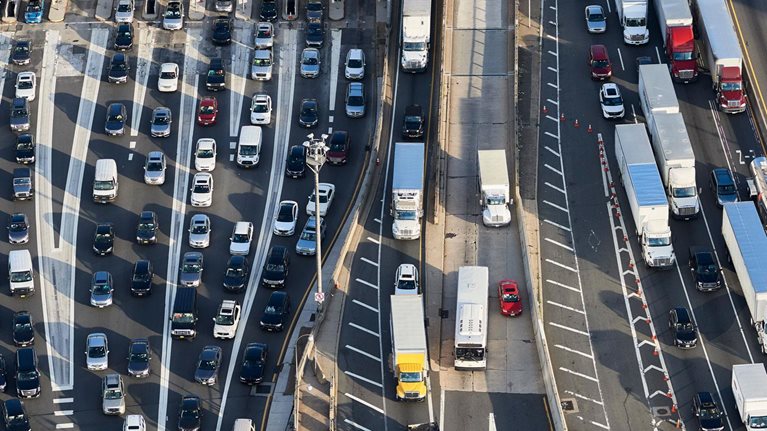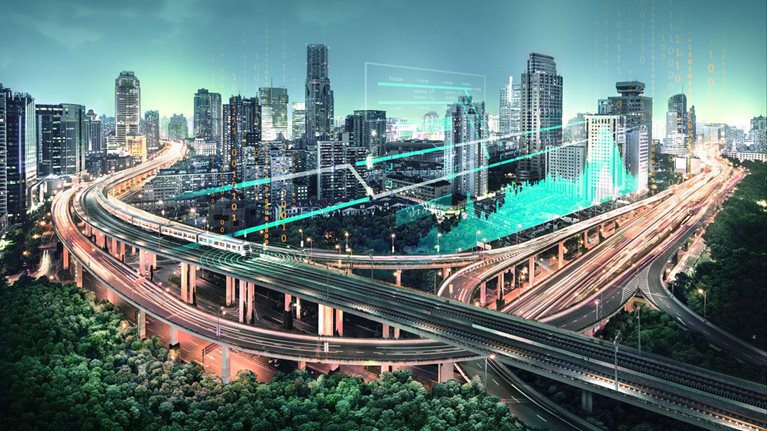According to the Intergovernmental Panel on Climate Change’s Fifth Assessment Report, the global transport sector is responsible for 23 percent of total energy-related CO2 emissions, 72 percent of which is attributable to road transportation. As part of its climate protection strategy, Sweden has committed to having a transport sector independent of fossil-fuel vehicles by 2030. One potential solution is to implement an electric road system (ERS). In this Q&A, Swedish Transport Administration (Trafikverket) director general Lena Erixon elaborates on the reasoning behind investing in ERS, the challenges along the way, and the future of freight transport.
Stay current on your favorite topics
McKinsey: Why did Sweden invest in the ERS program?
Lena Erixon: A crucial element of a sustainable society is a well-functioning freight transport system, capable of moving goods efficiently, safely, and sustainably. But the fossil fuel–dependent road freight transport systems of today do not fulfill these criteria; these fuels are limited, their availability is not guaranteed indefinitely due to geopolitical concerns, and they have been proven to harm the environment and human health. In Sweden, road traffic accounts for one-third of carbon emissions, one-fourth of which is attributable to heavy-duty freight traffic.1
We analyzed Sweden’s road freight transport sector from the perspective of the International Energy Agency’s Avoid-Shift-Improve policy—that is, urban transport solutions “that allow travel to be ‘avoided’; those that ‘shift’ travel to more efficient modes; and those that ‘improve’ the efficiency of vehicle and fuel technologies.”2 Viewed through this lens, it became clear that Sweden’s road freight transport sector must, to a large degree, focus on the “improve” lever. Road freight traffic is unavoidable (and expected to grow significantly3 ), and the ability to shift to other modes of transport is limited: Sweden’s publicly funded road network is 15 times longer than the publicly funded railroad system, and the coastal maritime transport is limited for inland destinations.
We determined that ERSs could be implemented with relatively minor improvements in the road network compared with the major investment that would be needed for completely new infrastructure. And it has the potential to reduce energy use, lower greenhouse gas emissions, and improve air quality.
McKinsey: How did you initiate this program?
Lena Erixon: As with many other research, innovation, and development projects, the Swedish ERS program began with a dedicated analysis of the existing options, industry players, and maturity of ERS technology. In 2013, Trafikverket together with the Swedish Energy Agency and the Swedish Innovation Agency launched what was, at the time, the largest pre-commercial procurement (PCP) project in Europe. The goal of the project is to generate knowledge, experience, and decision data that is conducive to the creation of a platform for the electrification of larger transport routes in Sweden.
The PCP consisted of different qualification steps, and, over the course of two years, the initial 11 applicants were reduced to the two most viable technologies. The two vendors we chose approached the ERS from different angles—one using an elevated line, and the other using a rail in the roadway—and we embarked on a demonstration project with each. The first electric road for heavy-duty vehicles on public roads was opened just one year later, on June 22, 2016.
McKinsey: How do the two pilot technologies work?
Lena Erixon: Both technologies allow vehicles to charge as they drive using conductive transfer. One, implemented along a stretch of highway E16 in Sandviken, involves overhead electric lines, and the vehicle connects with these lines using a pantograph. The pantograph can reach the height of the overhead lines and obtain electricity through a collector on the roof. The collector feeds energy to a hybrid electric motor.
The other, implemented as a dedicated lane on Road 893 near Arlanda, charges electric vehicles using a rail in the roadway, connected via a moveable arm under the vehicle. This technology can be accessed by both heavy- and light-duty vehicles.

Voices on Infrastructure
Our quarterly compendium on infrastructure and capital projects
McKinsey: Based on your experience to date, which are the most promising technologies and why?
Lena Erixon: Each ERS technology has its own advantages and disadvantages. An ERS based on an overhead line can, to a large degree, use mature overhead lines developed for rail applications. This system also leaves the roadway intact but is limited to heavy-duty vehicles that can attach to the overhead lines. Meanwhile, the road-bound ERS must be installed in the roadway, creating some additional maintenance needs such as surface renewal and snow clearance. However, the advantage is that it can connect with light-duty vehicles as well as heavy-duty ones.
For the road freight transport sector, there are many potential solutions such as biofuels, electrofuels, and various forms of electricity and efficiency improvements. We can’t expect one single technology to replace all fossil fuels, thus they all need to exist, develop, and mature in parallel.
McKinsey: How have the ERS pilots managed to navigate regulations and safety requirements?
Lena Erixon: In Sweden we have been working on Vision Zero—that is, no loss of life is acceptable—for road safety for years. Therefore, safety is essential for the ERS, and one important challenge for the two pilot projects was to construct an ERS within the existing legal framework. The safety risks have been evaluated by comparing the ERS to similar systems and by explicit risk estimation and testing. It has been important to address each ERS technology—that is, each potential solution—at its current maturity level. This evaluation has resulted in different time schedules and deliverables for each project to ensure a working, safe, and reliable ERS on the public road.
McKinsey: What are the next steps, and where do you see this technology going?
Lena Erixon: Overall, ERS technology is in its infancy and needs further development to fully mature. In the years to come, we should test and demonstrate these and other ERS technologies in relevant operational environments. Further development and demonstrations could also increase the competition between and within ERS technologies—ultimately leading to better products. Today, each ERS technology could be considered a monopoly with a single technology supplier, which makes public procurement challenging.
The two current demonstration projects are largely focused on ensuring the technology works and that government approvals, regulations, and procedures are in place. An important next step would be to have a project that includes all actors in the value chain, from the freight owners and haulers to technology and service suppliers. Key stakeholders for this to happen are the regional authorities who can establish a commitment from the regional business community and act as hubs for all stakeholders involved. Such a pilot should be at least 20 to 30 kilometers and preferably include a large portion of shuttle-like transport operations with several freight owners, haulers, and original equipment manufacturers.
So in the near term, the focus will be on further developing and maturing the ERS markets. Within 10 years, we will hopefully have some individual and independent commercial or semi-commercial ERS systems in Europe and plans for transnational freight corridors.
Photo courtesy of Trafikverket


